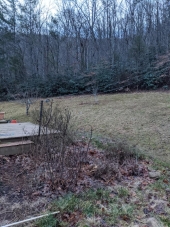posted 3 years ago
Hi all. I'm designing a food forest for a client on a 2 acre piece of land in Washington state (U.S.) in the Olympic rainshadow - 20-30 annual inches of rain, concentrated from October-April with dry summers. The land is very gradually sloping south, in that walking on it you don't feel the slope, but from the side you can see it. The land is recently cleared forest - natively Western Red Cedar, Douglas Fir, and Red Alder. The soil is mostly clay with lots of topsoil. Apparently in the winter the area can get pretty muddy.
The goal is to grow a variety of edible trees, shrubs, herbs, groundcover, vines, etc (the typical food forest thing). I'm trying to decided if we should do some earth working to increase the water-holding capacity for the dry summers / provide some diversity in soil moisture for different plants. Materials we have available are an abundance of woodchips and several dozen alder logs that have been limbed already. Some options I'm considering currently are to dig deep but skinny swales on contour (I've heard that's best for clay soils, versus wider swales), with the topsoil piling up to make wider berms. I'd plant guilds around various nut/fruit/nitrogen fixing trees. Another idea is to make crescent-shaped swales around the guilds on the downhill side, and have the guilds be somewhat raised above them as if they're moats, as a way to keep the plants above standing water that may occur due to rainfall on the clay soils. The third idea is to place the logs on contour in some fashion, or bury the thinner ones under berms as a sort of hugelkultuur. The logs are roughly a foot or so in diameter, so I'm thinking that's probably too large to bury and have room to plant on.
I'm open to any and all suggestions. I've seen many earthworks designs on sloped land, but haven't see what people do on relatively flat land. Thank you in advance for your help.







